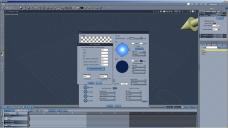Carrara's atmosphere editor
has anyone used the atmosphere editor to compute the sun's position, you have to use "Realistic Sky" to get to the particular editor, ( click on the advance tab).
What I'd like to know is how to put the time of day in, do you use the 12 hour or 24 hour format, when I use the 12 hour format the night box automatically gets ticked once you click on compute the sun position
as far as the longitude and latitude I don't have a problem with, the only exception is that Carrara's Altitude angle and Azimuth angle differs from the ones I get from this website http://aa.usno.navy.mil/data/docs/AltAz.php


Carrara_Atmosphere_Editor_Advanced_Sun Properties.jpg
1920 x 1080 - 407K


Comments
HI
make sure you set your Year Month Day settings,. the time format should be 24 hr,
I must admit, I tend to bung the sun manually into a place that seems about right.
I have rendered in Iray using the sun/sky method, with my approximate location and time of year dialled in (lat 43, lon -3, GMT - 1), and the lighting is pretty much as per looking out the window. 'East' in DS matches 'East' in Carrara.
I do the same thing as TangoAlpha. I usually set it up manually.
I find you have a better control. Even in another software i usually setup manually, when input the numbers i find it is not really very representative.
Thanks, after fooling around with the editor I found out that doing it manually is the way to go
If you use a sunlight or moonlight, you can position it without having to open the editor, and when you do need to go use it again, the changes in the light's orientation will be reflected in the editor.
Also, in case anybody didn't know, you can see a wireframe representation of the sun and moon in the Assembly room when they are selected and if the camera is aimed correctly. The sun looks like a scalloped circle, and the moon looks like a half circle. These wireframes are handy if you need a sunset or moon rise in a specific place in your scene.
You can position the wire frame by positioning your mouse pointer over the black dot in the center of the wireframe. When a crosshair appears, you can click and drag the wireframe to position it. You can also reposition them by just manipulating the orientation of the light itself. The sun wireframe also has a small line with a black dot sticking out of the right side. If you click and drag, the sun's disk size will get larger or smaller. There is no equivalent for the moon unfortunately.
Something else that can be done to enhance the realism of the sun when its disk is in the frame is to add a lens flare under the sun light's effects tab. There are two nice ones in the preset pulldown menu in the lens flare editor, but you can also create your own. The presets are a good starting point to see how they were set up, even if you decide to go your own route.
As my examples progress, I played around with different settings. The phase control for the moon was adjusted for example. Speaking of which, I don't use a lens flare on the moon usually, but I do brighten the aura color and expand the aura's size to help sell a full moon. For example. Also, if the moon is high in the night sky and looks more white, I tend to go with more of a blue-gray aura color, and if the moon is closer to the horizon and look more yellow or orange, I adjust the aura color to more closely match the moon's color.
Right on the money, thanks ep